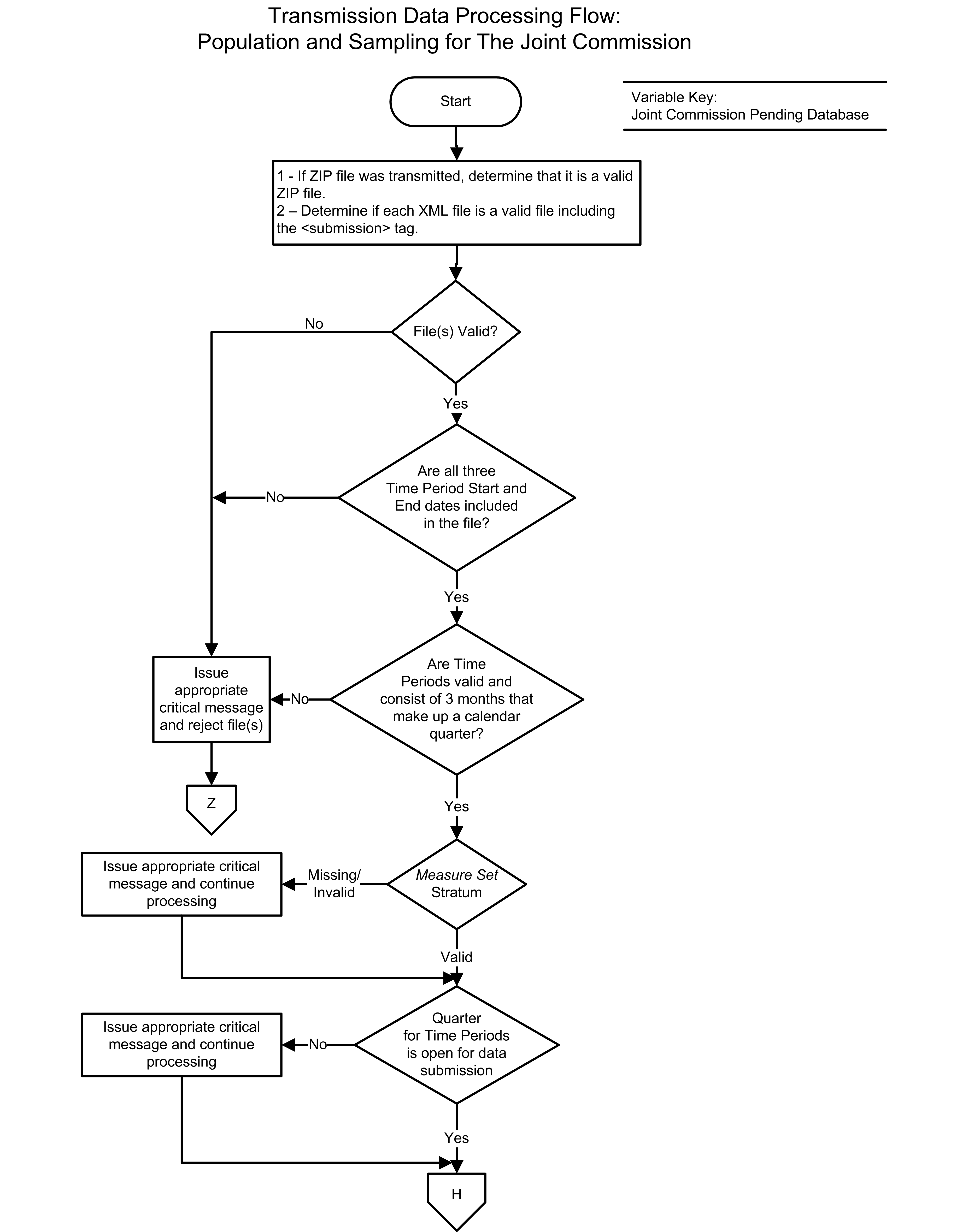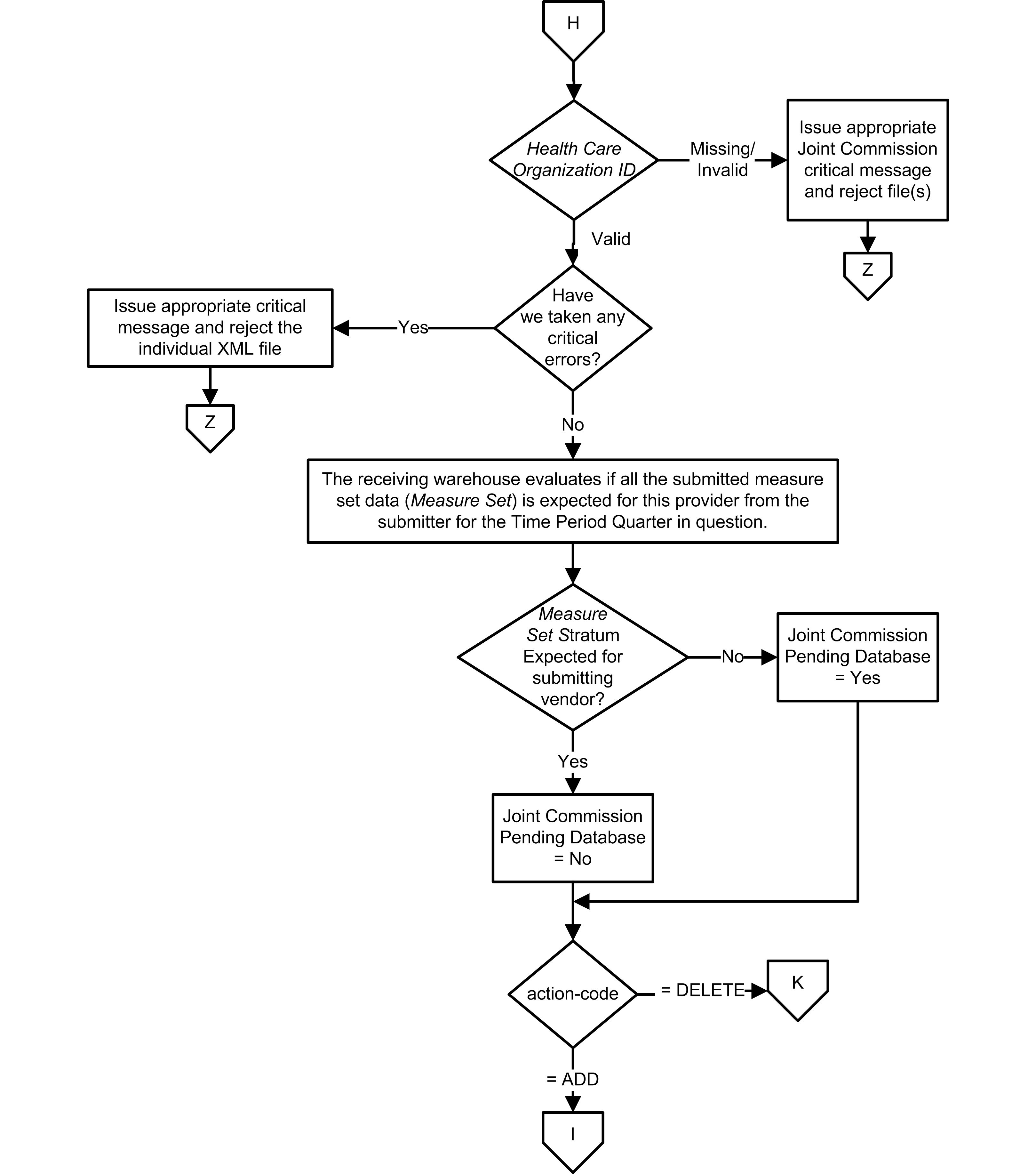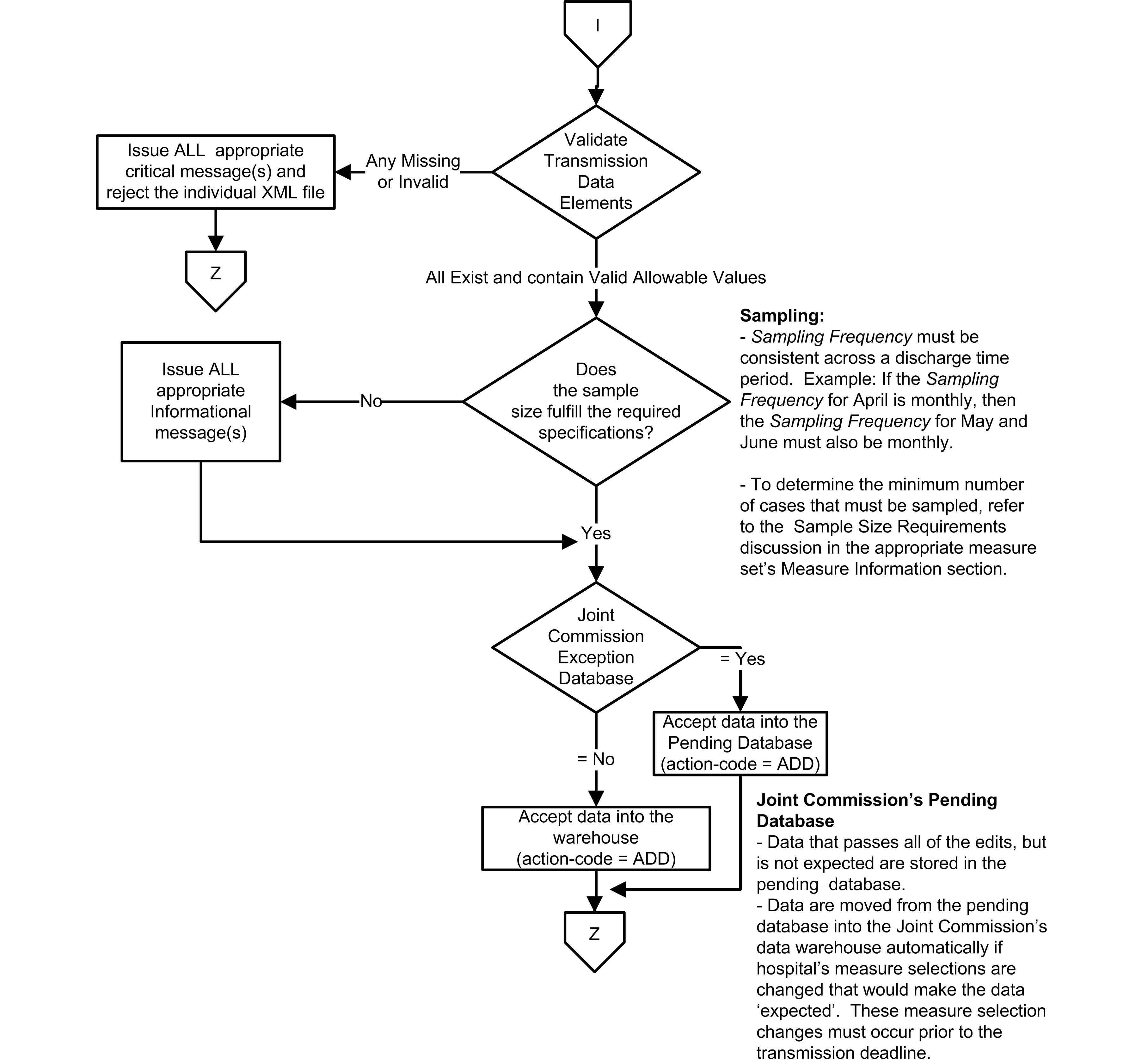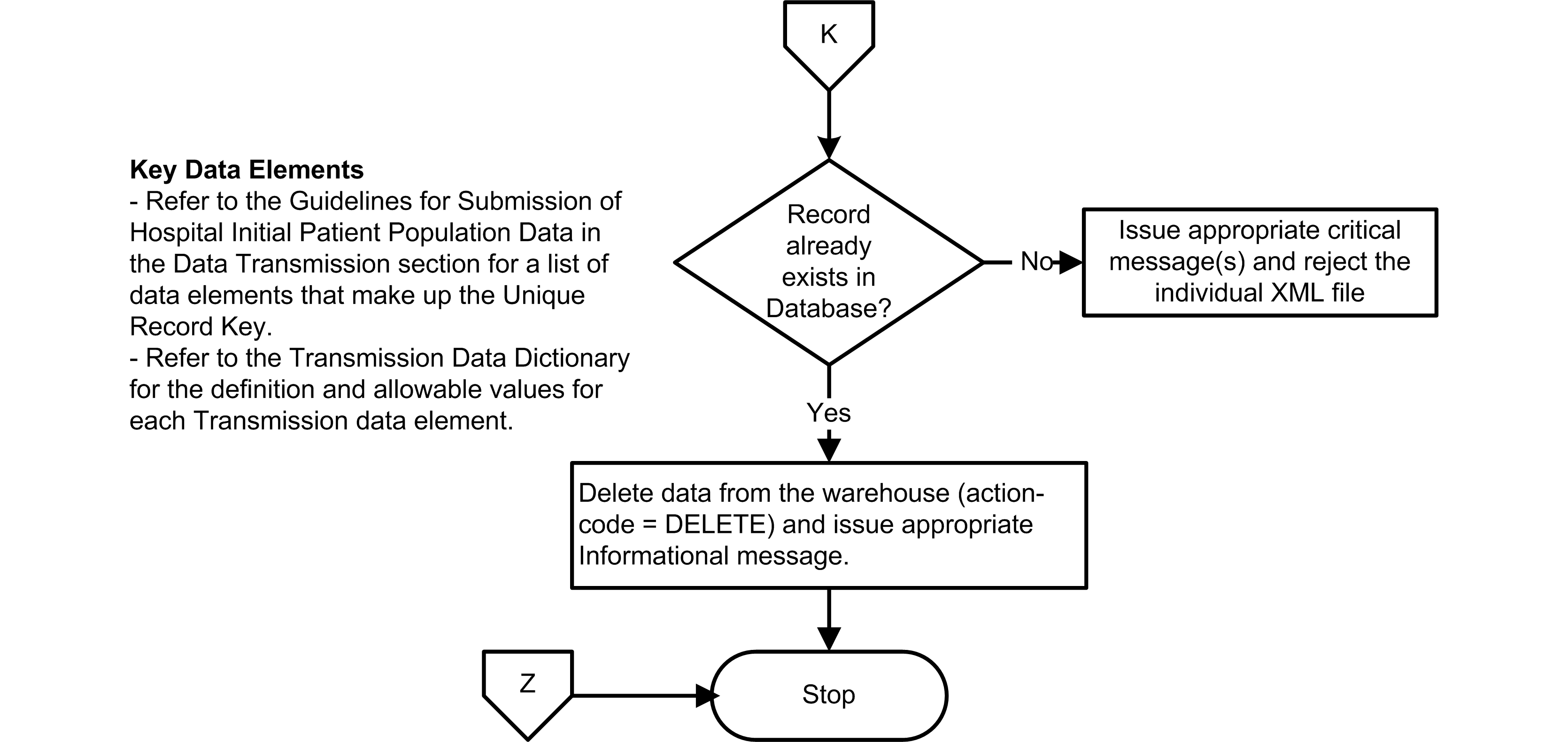Release Notes:
Transmission Population Data Processing Flow TJC
Version 2010A1
Transmission Data Processing Flow: Population and Sampling
Introduction
This section contains information regarding the order in which the Joint Commissionís Data Warehouse evaluate submitted files, which contain aggregate population and sampling counts. Transmission of population and sampling counts are used to assist in evaluating completeness of submission in accordance with The Joint Commission's sampling requirements.
Each case that is rejected by the process will be listed on a report along with a brief description of the problem. Vendors will access the Joint Commission's HCD Reports via the Performance Measurement System Extranet Track (PET).
Transmission Data Processing Flow
All data transmitted pass through the following process:
- If appropriate, files are verified to be proper zip and XML files.
- If the files are invalid, reject the file(s) and stop processing.
- If the files are valid, continue processing.
Starting with this step, processing is per XML file:
- Data are evaluated to ensure that three individual time periods, which make up a calendar quarter, exist within the file.
- If the data are not expected, reject the XML file and stop processing.
- If the data are expected, continue processing.
- The Measure Set /Stratum is evaluated to ensure a valid value is submitted.
- If the data are not expected, reject the SML file and stop processing.
- If the data are expected, continue processing.
- Data are evaluated to ensure the quarter for Time Periods is open for data submission.
- If the Data Collection quarter is closed, reject the XML file and stop processing.
- If the Data Collection quarter is open, continue processsing.
- If the files are submitted to The Joint Commission: The Health Care Organization Identifier is evaluated to ensure a valid value is submitted.
- If the data are not expected, reject the XML file and stop processing.
- If the data are expected, continue processing.
- If the files are submitted to The Joint Commission: Data are evaluated to ensure the Measure Set(s) or Strata are expected from the submitter.
- If the data are not expected, set the reject 'Pending Database' flag = Yes, continue processing.
- If the data are expected, set the reject 'Pending Database' flag = No, continue processing.
- Check the action-code
- If the action-code = ADD, continue with step #9.
- If the action-code = DELETE, continue with step #12.
- The trannsmission data elements, as defined in the Transmission Alphabeticla Data Dictionary, are evaluated to ensure they exist and contain valid allowable values. These transmission data elements are required for all submitted files.
- If any transmission data elements fall outside of the data integrity checks, reject the XML file and stop processing.
- If any transmission data element is mossing or invalid, reject the XML file and stop processing.
- If all transmission data elements exist and contain valid allowable values, continue processing.
- Data are evaluated to ensure that the sample size fulfills the required specifications. Sample Frequency must be consistent across all three time periods within a calendar quarter.
- If the data are not expected, informational messages generated, continue processing.
- If the data are expected, continue processing.
- a. Check the Pending Database Flag
- If the Pending Database flag = No, the case is accepted into the Joint Commission's Data Warehouse.
- If the Pending Database flag = Yes, the case is accepted into the Joint Commission's Data Warehouse automatically if hospital's measure selections are changed that would make the data 'expected' (refer to step #6b above). These measure selection changes must occur prior to the transmission deadline.
The following steps are performed if the record's action-code = DELETE:
- The database is checked to see if a record with the same Unique Record Key, as defined in the Data Transmission section, exists.
- If the case does not exist in the database, then the transmitted DELETE record is rejected.
- If the record does exist in the database, the existing record is deleted.
Transmission Data Processing Flow Algorithm




Related Topics



